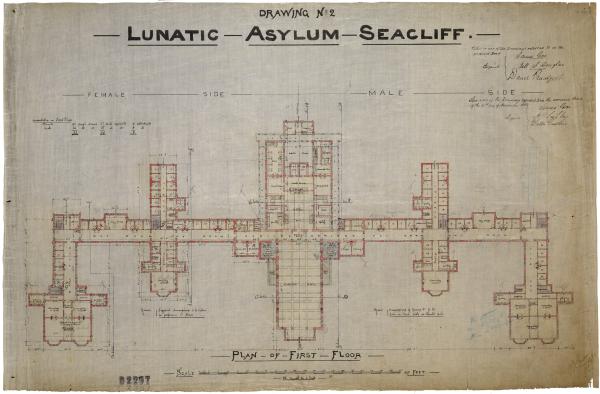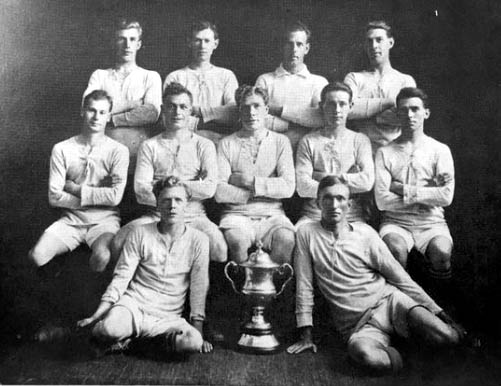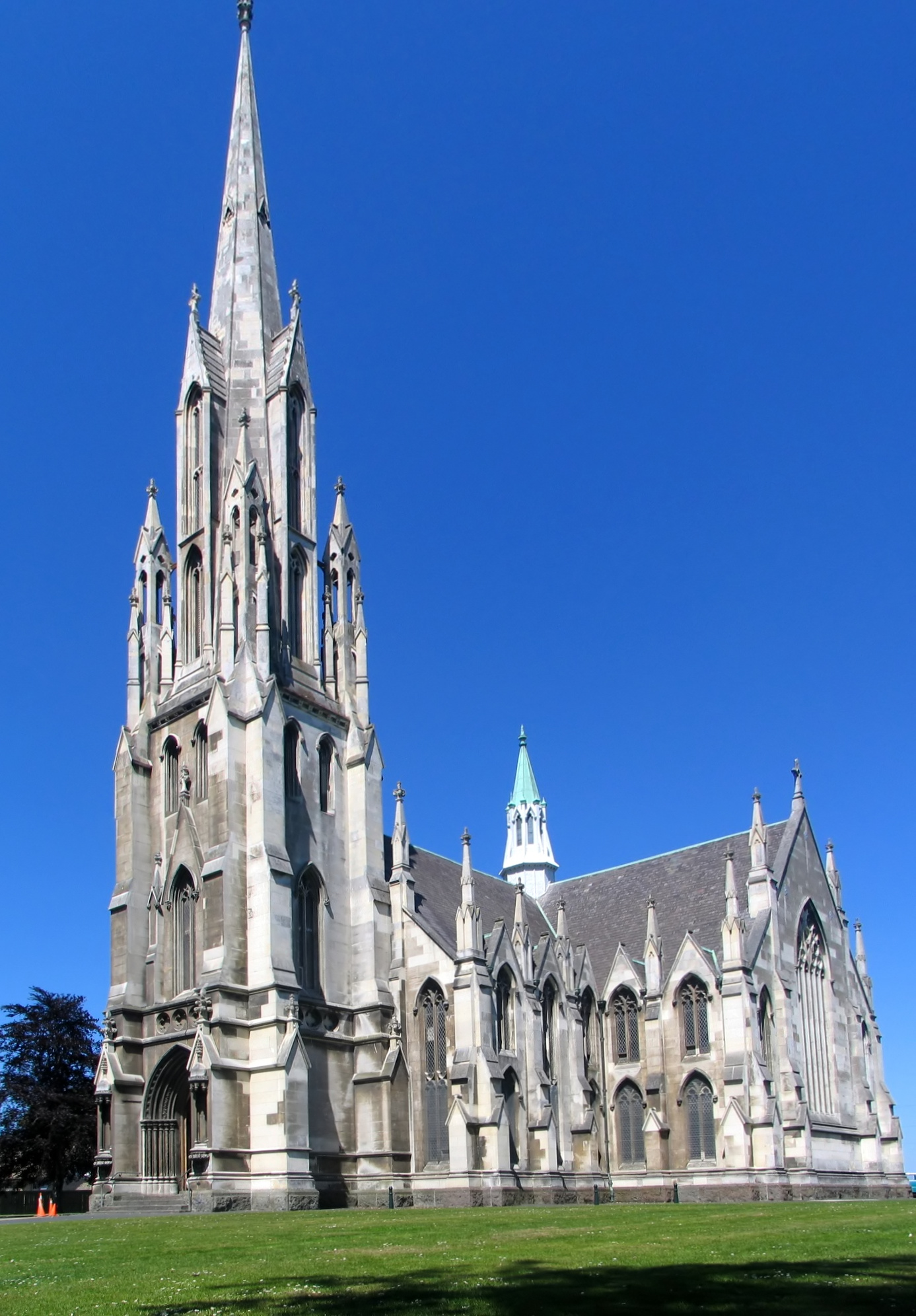|
Seacliff, New Zealand
Seacliff is a small village located north of Dunedin in the Otago region of New Zealand's South Island. The village lies roughly halfway between the estuary of Blueskin Bay and the mouth of the Waikouaiti River at Karitane, on the eastern slopes of Kilmog hill. Coast Road, an old route north from Dunedin, and the South Island Main Trunk Railway pass through the village. History Seacliff is the site of the former Seacliff Lunatic Asylum a mental institution built in the late 19th century and, for many years, the nation's largest public building. The hospital was designed by architect Robert Lawson and managed for many years by Sir Frederic Truby King, who also founded New Zealand's Plunket, a post-natal health charity. Writer Janet Frame was notable among the mental institution many patients. A commemorative plaque on a magnolia tree commemorates the years Janet Frame spent at Seacliff Lunatic Asylum. In 1942, just prior to Frame's first admission, the mental institution was ... [...More Info...] [...Related Items...] OR: [Wikipedia] [Google] [Baidu] |
Regions Of New Zealand
New Zealand is divided into sixteen regions () for local government in New Zealand, local government purposes. Eleven are administered by regional councils (the top tier of local government), and five are administered by Unitary authority#New Zealand, unitary authorities, which are territorial authorities of New Zealand, territorial authorities (the second tier of local government) that also perform the functions of regional councils. The Chatham Islands#Government, Chatham Islands Council is not a region but is similar to a unitary authority, authorised under its own legislation. Current regions History and statutory basis The regional councils are listed in Part 1 of Schedule 2 of the Local Government Act 2002 (New Zealand), Local Government Act 2002, along with reference to the ''New Zealand Gazette, Gazette'' notices that established them in 1989. The Act requires regional councils to promote sustainable developmentthe social, economic, environmental and cultural well-bei ... [...More Info...] [...Related Items...] OR: [Wikipedia] [Google] [Baidu] |
Seacliff Lunatic Asylum
Seacliff Lunatic Asylum (often Seacliff Asylum, later Seacliff Mental Hospital) was a psychiatric hospital in Seacliff, New Zealand. When built in the late 19th century, it was the largest building in the country, noted for its scale and extravagant architecture. It became infamous for construction faults resulting in partial collapse, as well as a 1942 fire which destroyed a wooden outbuilding, claiming 37 lives (39 in other sources), because the victims were trapped in a locked ward.Fire: Seacliff Mental Hospital (from the website) The asylum was less than 20 miles north of |
1923 Chatham Cup
The 1923 Chatham Cup was the first annual nationwide football competition in New Zealand. The competition was run on a regional basis, with separate northern and southern tournaments, with the winners of the two meeting in the final. Very few teams entered the competition, including only two from the southern South Island; Seacliff easily won the only match played there, thumping Oamaru 7-0, and repeated this in the final, accounting for Wellington's YMCA 4-0. Of the teams taking part, it is known that four were from Wellington; contemporary reports indicate that Diamonds, Y.M.C.A. (Wellington), Hospital and Waterside took part. The Wellington FA scheduled their first Chatham Cup fixture for 11 August, between the Y.M.C.A. (Wellington) and Waterside at the Basin Reserve. Admission to the match cost one shilling. The management committee of the Auckland Football Association (A.F.A.) announced at its meeting on 5 June that Chatham Cup entries had closed with the North Shore, Phi ... [...More Info...] [...Related Items...] OR: [Wikipedia] [Google] [Baidu] |
Association Football
Association football, more commonly known as football or soccer, is a team sport played between two teams of 11 players who primarily use their feet to propel the ball around a rectangular field called a pitch. The objective of the game is to score more goals than the opposition by moving the ball beyond the goal line into a rectangular framed goal defended by the opposing side. Traditionally, the game has been played over two 45 minute halves, for a total match time of 90 minutes. With an estimated 250 million players active in over 200 countries, it is considered the world's most popular sport. The game of association football is played in accordance with the Laws of the Game, a set of rules that has been in effect since 1863 with the International Football Association Board (IFAB) maintaining them since 1886. The game is played with a football that is in circumference. The two teams compete to get the ball into the other team's goal (between the posts and under t ... [...More Info...] [...Related Items...] OR: [Wikipedia] [Google] [Baidu] |
Nature Reserve
A nature reserve (also known as a wildlife refuge, wildlife sanctuary, biosphere reserve or bioreserve, natural or nature preserve, or nature conservation area) is a protected area of importance for flora, fauna, or features of geological or other special interest, which is reserved and managed for purposes of conservation and to provide special opportunities for study or research. They may be designated by government institutions in some countries, or by private landowners, such as charities and research institutions. Nature reserves fall into different IUCN categories depending on the level of protection afforded by local laws. Normally it is more strictly protected than a nature park. Various jurisdictions may use other terminology, such as ecological protection area or private protected area in legislation and in official titles of the reserves. History Cultural practices that roughly equate to the establishment and maintenance of reserved areas for animals date bac ... [...More Info...] [...Related Items...] OR: [Wikipedia] [Google] [Baidu] |
Otago Settlers' Museum
Otago (, ; mi, Ōtākou ) is a region of New Zealand located in the southern half of the South Island administered by the Otago Regional Council. It has an area of approximately , making it the country's second largest local government region. Its population was The name "Otago" is the local southern Māori dialect pronunciation of " Ōtākou", the name of the Māori village near the entrance to Otago Harbour. The exact meaning of the term is disputed, with common translations being "isolated village" and "place of red earth", the latter referring to the reddish-ochre clay which is common in the area around Dunedin. "Otago" is also the old name of the European settlement on the harbour, established by the Weller Brothers in 1831, which lies close to Otakou. The upper harbour later became the focus of the Otago Association, an offshoot of the Free Church of Scotland, notable for its adoption of the principle that ordinary people, not the landowner, should choose the minist ... [...More Info...] [...Related Items...] OR: [Wikipedia] [Google] [Baidu] |
Cherry Farm
Hawksbury, also known as Cherry Farm (and sometimes erroneously as "Evansdale"), is a small residential and industrial area in New Zealand, located beside State Highway 1 between Dunedin and Waikouaiti.Sea Container history. Seadog 1979. Place names Hawksbury was the site of Dunedin's Cherry Farm Psychiatric Hospital, and the name Cherry Farm is still widely used within Otago for the hospital's former site. The name HawksburyCrown Protected Area Placenames ( file on website, retrieve ... [...More Info...] [...Related Items...] OR: [Wikipedia] [Google] [Baidu] |
Magnolia Tree
''Magnolia'' is a large genus of about 210 to 340The number of species in the genus ''Magnolia'' depends on the taxonomic view that one takes up. Recent molecular and morphological research shows that former genera ''Talauma'', ''Dugandiodendron'', ''Manglietia'', ''Michelia'', ''Elmerrillia'', ''Kmeria'', ''Parakmeria'', ''Pachylarnax'' (and a small number of monospecific genera) all belong within the same genus, ''Magnolia'' s.l. (s.l. = ''sensu lato'': 'in a broad sense', as opposed to s.s. = ''sensu stricto'': 'in a narrow sense'). The genus ''Magnolia'' s.s. contains about 120 species. See the section Nomenclature and classification in this article. flowering plant species in the subfamily Magnolioideae of the family Magnoliaceae. It is named after French botanist Pierre Magnol. ''Magnolia'' is an ancient genus. Appearing before bees evolved, the flowers are theorized to have evolved to encourage pollination by beetles. To avoid damage from pollinating beetles, the carpe ... [...More Info...] [...Related Items...] OR: [Wikipedia] [Google] [Baidu] |
Janet Frame
Janet Paterson Frame (28 August 1924 – 29 January 2004) was a New Zealand author. She was internationally renowned for her work, which included novels, short stories, poetry, juvenile fiction, and an autobiography, and received numerous awards including being appointed to the Order of New Zealand,The Order of New Zealand Honours List New Zealand's highest civil honour. Frame's celebrity derived from her dramatic personal history as well as her literary career. Following years of psychiatric hospitalisation, Frame was scheduled for a that was cancelled when, just days before the procedure, her debut publication of short stories was unexpectedly awa ... [...More Info...] [...Related Items...] OR: [Wikipedia] [Google] [Baidu] |
Plunket Society
The Royal New Zealand Plunket Trust provides a range of free services aimed at improving the development, health and wellbeing of children under the age of five within New Zealand, where it is commonly known simply as Plunket. Its mission is "to ensure that New Zealand children are among the healthiest in the world". Much of Plunket's work is organised by volunteer bases throughout New Zealand. It was an incorporated society named the Royal New Zealand Plunket Society until 1 January 2018, when it became a charitable trust under the Charitable Trusts Act 1957. History In 1905 Plunket had its beginnings in Seacliff, a small village on the Coast Road north of Dunedin. Dr Frederic Truby King, then superintendent of Seacliff Asylum, began studying paediatrics and child welfare began when his adopted baby daughter Mary was making no progress. He devised a milk-based formula which led her to thrive. He formed the belief that by providing support services to parents, the society co ... [...More Info...] [...Related Items...] OR: [Wikipedia] [Google] [Baidu] |
Truby King
Sir Frederic Truby King (1 April 1858 – 10 February 1938), generally known as Truby King, was a New Zealand health reformer and Director of Child Welfare. He is best known as the founder of the Plunket Society. Early life King was born in New Plymouth on 1 April 1858, the son of Thomas and Mary King. His brother, Newton King, was to become a leading Taranaki businessman. Truby King was privately educated by Henry Richmond and proved to be a keen scholar. After working for a short time as a bank clerk he travelled to Edinburgh and Paris to study medicine.''From the pen of F Truby King'', Truby King Booklet Committee, Auckland, undated In 1886, he graduated with honours with a M.B., C.M, and later completed a BSc in Public Health (Edinburgh). Although his interest was in surgery it was the demonstrations of Charcot on hysteria and neurological disorders that influenced his choice of career. While training in Scotland he married Isabella Cockburn Miller. Around 1904, King and ... [...More Info...] [...Related Items...] OR: [Wikipedia] [Google] [Baidu] |
Robert Lawson (architect)
Robert Arthur Lawson (1 January 1833 – 3 December 1902) was one of New Zealand's pre-eminent 19th century architects. It has been said he did more than any other designer to shape the face of the Victorian era architecture of the city of Dunedin. He is the architect of over forty churches, including Dunedin's First Church for which he is best remembered, but also other buildings, such as Larnach Castle, a country house, with which he is also associated. Born at Newburgh, in Fife, Scotland, he emigrated in 1854 to Australia and then in 1862 to New Zealand. He died aged 69 in Canterbury, New Zealand. Lawson is acclaimed for his work in both the Gothic revival and classical styles of architecture. He was prolific, and while isolated buildings remain in Scotland and Australia, it is in the Dunedin area that most surviving examples can now be found. Today he is held in high esteem in his adopted country. However, at the time of his death his reputation was at a low ebb ... [...More Info...] [...Related Items...] OR: [Wikipedia] [Google] [Baidu] |




.jpg)

